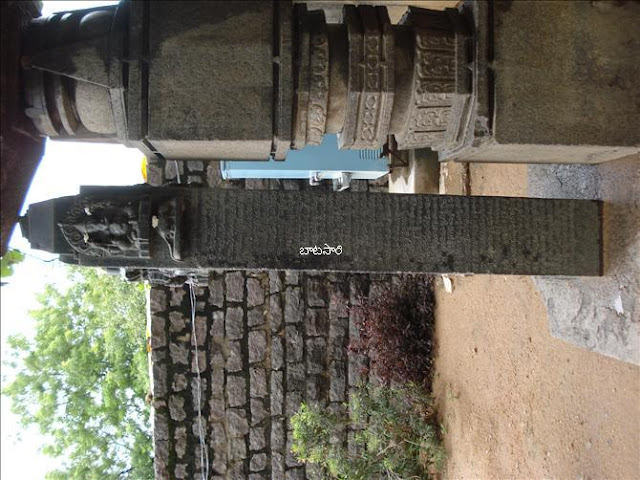The Thousand Pillar Temple (Telugu: వెయ్యి స్థంభాల గుడి) is a historic Hindu temple located in the city of Hanamakonda, Andhra Pradesh,India It is dedicated to Lord Shiva, Lord Vishnu and Lord Surya.
History:
The Thousand Pillar Temple is one of the very old temples of South India that was built by the kakatiyas of Chalukya dynasty. It stands out to be a masterpiece and achieved major heights in terms of architectural skills by the ancient kakathiya vishwakarma sthapathis. It is believed that the Thousand Pillar Temple was built by King Rudra Deva in 1163 AD. The Thousand Pillar Temple is a specimen of the Kakatiyan style of architecture of the 12th century.
It was destroyed by the Mughal Empires during their invasion of South India. It comprises one temple and other building. There are one thousand pillars in the building and the temple, but no pillar obstructs a person in any point of the temple to see the god in the other temple.
The present day engineers have taken out all the pillars from the building. After they lifted all the pillars they encountered a huge mass of sand. It took nearly two weeks for them to take away all the sand. It was wet sand, because of a pipe connection from the nearby water body named Bhadrakali Cheruvu.
Temple Architecture :
The Thousand Pillar Temple with its ruins lies in the near the Hanamkonda-Warangal highway, about 150 kilometers from Hyderabad city. This temple is star-shaped with several shrines and lingams. There are three shrines inside the temple called the Trikutalayam. The three shrines of the Thousand Pillar Temple are dedicated to Lord Shiva, Lord Vishnu and Lord Surya. The Thousand Pillar Temple is surrounded by a big garden in which many small lingam shrines can be seen. There are 1,000 richly carved pillars and a Nandi bull in the temple. The Nandi bull was carved out of a black basalt monolith that has been highly polished.
The Thousand Pillar Temple is constructed on a platform that is raised to one metre height from the ground level. The temple is provided with a number of pillars which are intricately carved and adorned. Rock cut elephants and perforated screens in the temple are characteristic of the then prevailing dynasty.
Photo Gallery :
Transportation:
By Air : The domestic airport situated at Hyderabad is the nearest and most convenient air connection with the rest of the country. Indian Airlines connects Hyderabad with Delhi and other major cities of India. For more information on flight schedule and timings refer to the official website of Indian Airlines http://indian-airlines.nic.in/By Rail : Warangal has its own railway station which connects it to major Indian cities. Important daily trains between Delhi and Warangal are the G T Exp., Tamil Nadu Exp., Kerala Exp. and Dakshin Exp. For train timings and online bookings, refer to the official site of Indian Railways http://www.indianrail.gov.in/
By Road : Andhra Pradesh State transport corporation operates regular buses for Warangal from all the major neighbouring cities including Hyderabad, Vijaywada, Karimnagar and Khammam. Private taxis can also be hired, available from various locations around the city.
Local Transport : The easily available and primary means of transport to move around inside the city include Buses, Taxis, auto-rickshaws and cycle rickshaws.
Distance from Major Cities
Bangalore : 702 Km
Chennai : 665 Km
Nagpur : 450 Km
Hyderabad : 140 Km



























Nice Information.............
ReplyDeleteExcellent Bhava ,Nice Information about 1000 pillars
ReplyDeleteExcellent meghanath
ReplyDeleteGood information..............Please keep updates on warangal History
ReplyDelete